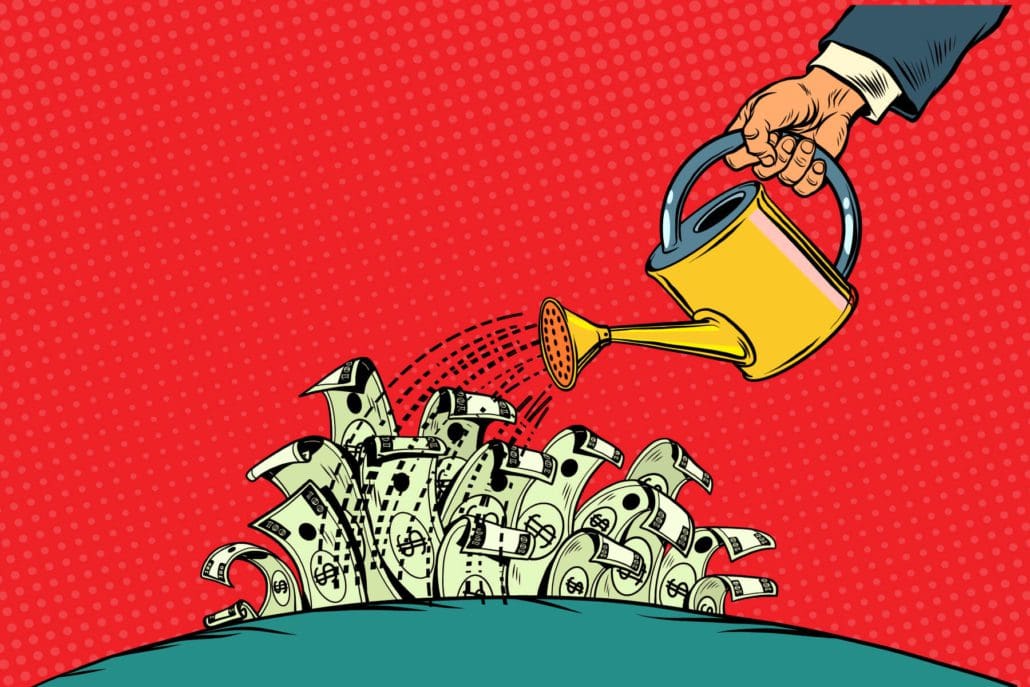Harvard MBA, a lesson on stock price and valuation

Medium is great, isn’t it? All sorts of folks write all sorts of things. Also, all sorts of folks write all sorts of things that I may or may not agree with. All in all it’s a pretty healthy outlet! But let’s take a dive down the rabbit hole on one in particular.
Last week a Harvard MBA Student wrote about the most “mind blowing things” she learned in her first semester. One of which was this:
Stock price is meant to reflect the value of a company. One way to think about “value” is as the sum of all the money a company will make, forever.
OHMYGODNO please don’t run around saying things like that!
We have business owners bring up a variation of this all the time (“…if I just kept running my company I would earn more”). Just like our author, that’s actually partially right, but there are quite a few dearly important caveats that need to be made. Proceeding with the caveats:
Forecasting The Death of a Company
Consider this: if value is the sum of all future earnings, then the PE ratio is thus telling us the lifespan of a company. A 10x PE ratio implies that the company will earn exactly 10 more years of earnings (at current run rate).
Unfortunately, crystal balls don’t exist and the world is a little messy. Let’s take a look at this in real life:
This is a chart of the historical PE ratios for the S&P 500. Notice how the ratio moves up and down? By the above logic, investors in 1980 thought companies had 6.8 years of earnings available to them. Flash forward to 2010 and investors thought companies had 123.7 years of earnings ahead. This month? Down to only 20. (Side note- what the heck, 2010??)

So what the heck is going on here?
The Principle of Substitution
One basic premise is that investors seek a reasonable return on their invested capital, and that they seek increasing returns for their perceived risk. Consider for a moment that you are investing in coffee bean companies. You love coffee. The world loves coffee. The world has a deep supply of coffee beans.
Uncertainty About the Future
Let’s be honest: we really don’t know how long a company is going to hang around, right? We don’t know if it will be the next BNY Mellon (Est. 1784) or the next Friendster (RIP c. 2009). To help us account for uncertainty we discount future years.
Let’s use an example. As of close on Friday, a single share of Apple stock was valued at $132.54. How much would you be willing to pay for a share of Apple stock 28 years in the future? I mean, right now – today – you have an option to purchase a share 28 years from now?
We’ve all seen the story of Ron Wayne, right? Poor fella lost out on $35bn when he sold his shares of Apple for $800 in 1978. You don’t want to be that guy. His investment would have increased 43,000,000x.
So with that in mind, you’re ready to reach deep into your pocket and right a check for…. oh that’s right. Not much. Because you don’t KNOW what’s going to happen in 28 years. Sure, you might be willing to make a small bet on the off chance that your investment pays off. It’s a prop bet, really. You’d only be willing to wager a small amount due to the great uncertainty that the future holds.
And this brings us to the heart of the matter.
Pricing in Uncertainty
The value of a company IS the value of all of it’s future earnings… discounted for uncertainty. When you look at a PE ratio of 10x… that doesn’t mean that you think a company is going to earn exactly 10 times its current earnings. It means that after apportioning the risk that it will cease to exist, earnings will change, etc, that the market is will to pay 10x for that today.
This is exactly what we do when running a discounted cash flow (DCF) model. We develop a discount rate and then apply that to future earnings. The discount rate prices in the uncertainty regarding the future prospects of the company.
While we are on the subject, here’s a fun technical note: if earnings are likely to extend into the far future, how do we handle them? Using our discount model, uncertainty increases exponentially into the future. As time approaches infinity risk adjusted earnings approach zero. Instead of running a model that runs through the year infinity, we instead use a “Terminal Value.” This value approximates all earnings from the year n+1 through infinity.
Winding Things Up
So there you have it. The value of a company IS the sum of all future earnings …. after a fashion. But more accurately, it’s what an investor is willing to pay today for the risk adjusted future earnings of the company. Simple concept, but as a practical matter complicated to calculate.